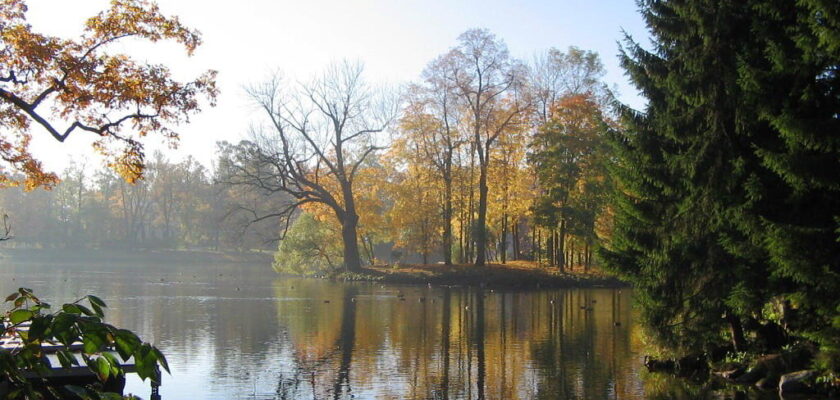Catherine Park in Pushkin
Catherine Park was laid out back in the early 18th century, when Tsarskoe Selo became the country residence of Peter’s wife Catherine I. Their daughter Elizabeth wanted to see the park as regular, but since the time of Catherine II it gradually began to become a landscape park. Now Catherine’s Park consists of two parts: the regular Old Garden and the landscape English Park. The Old (Dutch) Garden on three ledges in front of the palace was founded, according to legend, by Peter the Great himself. In Peter the Great’s time ponds were arranged here. Elizabeth Petrovna ordered the garden to expand and decorate it with marble sculpture by Venetian masters.
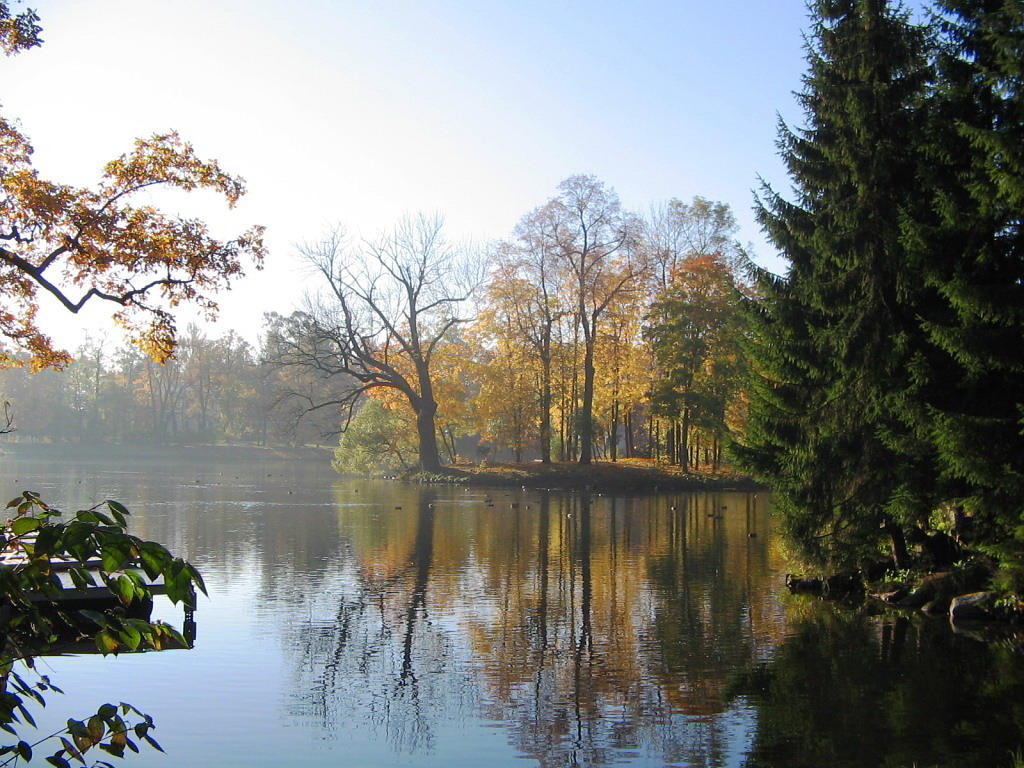
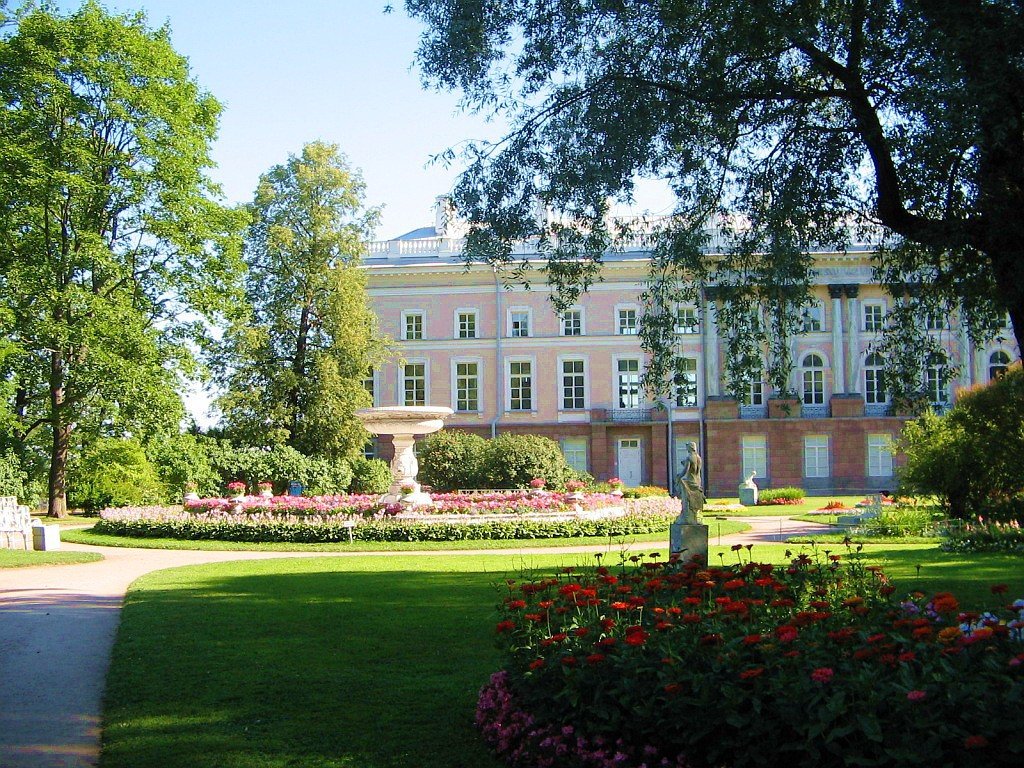
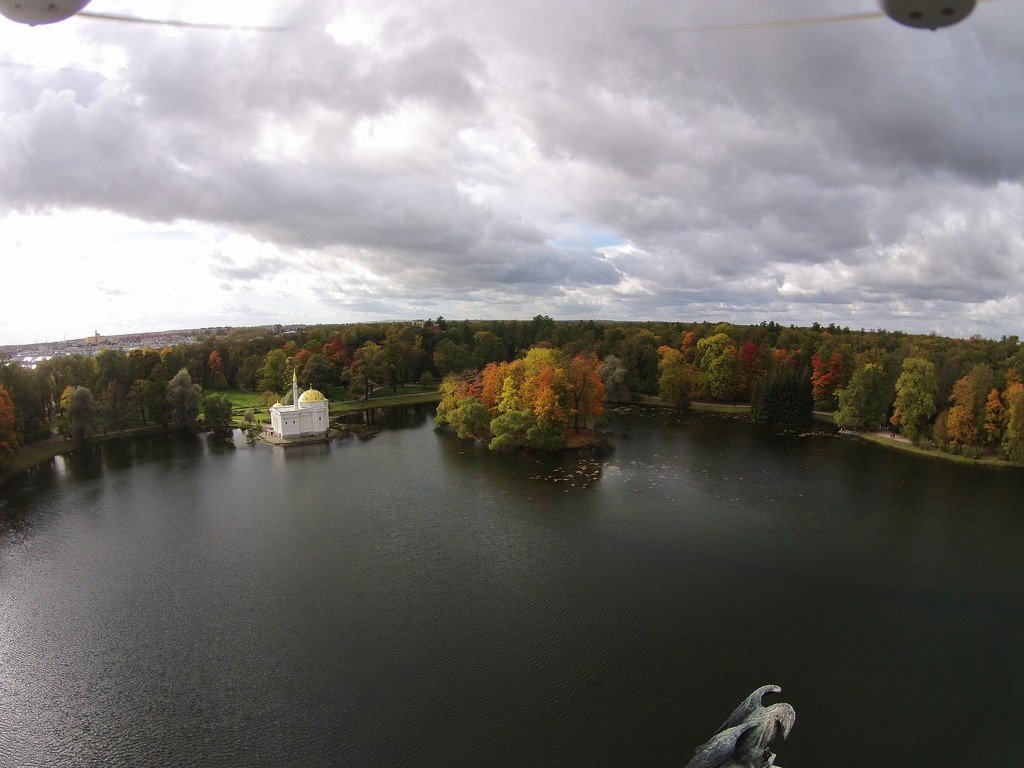
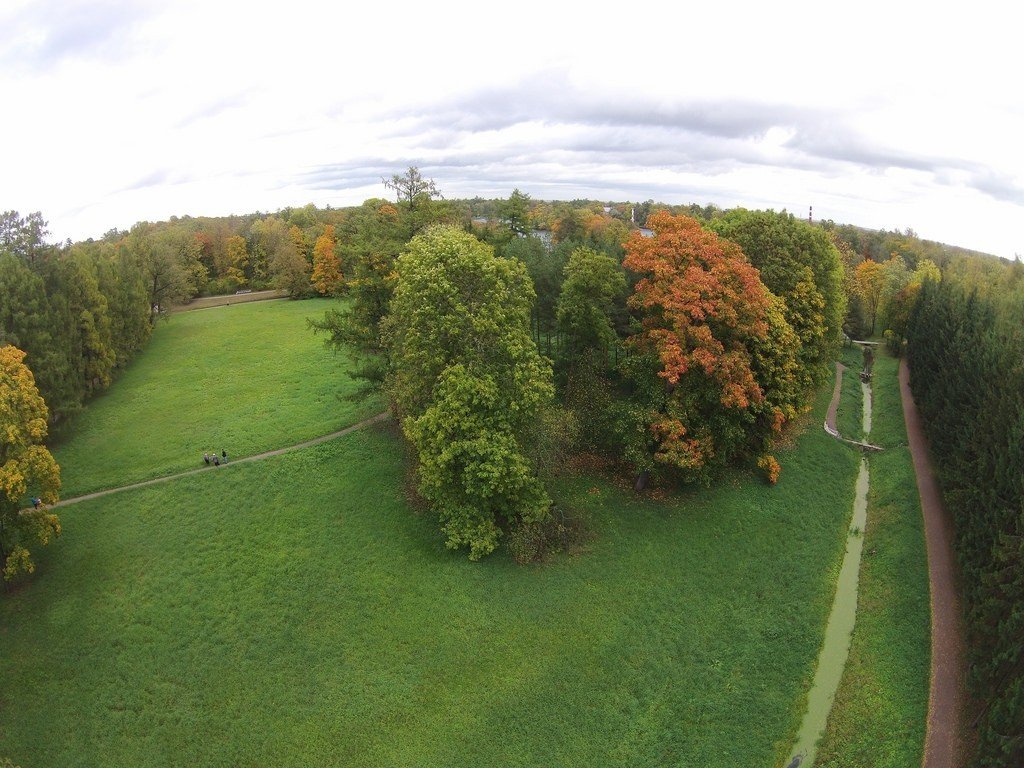
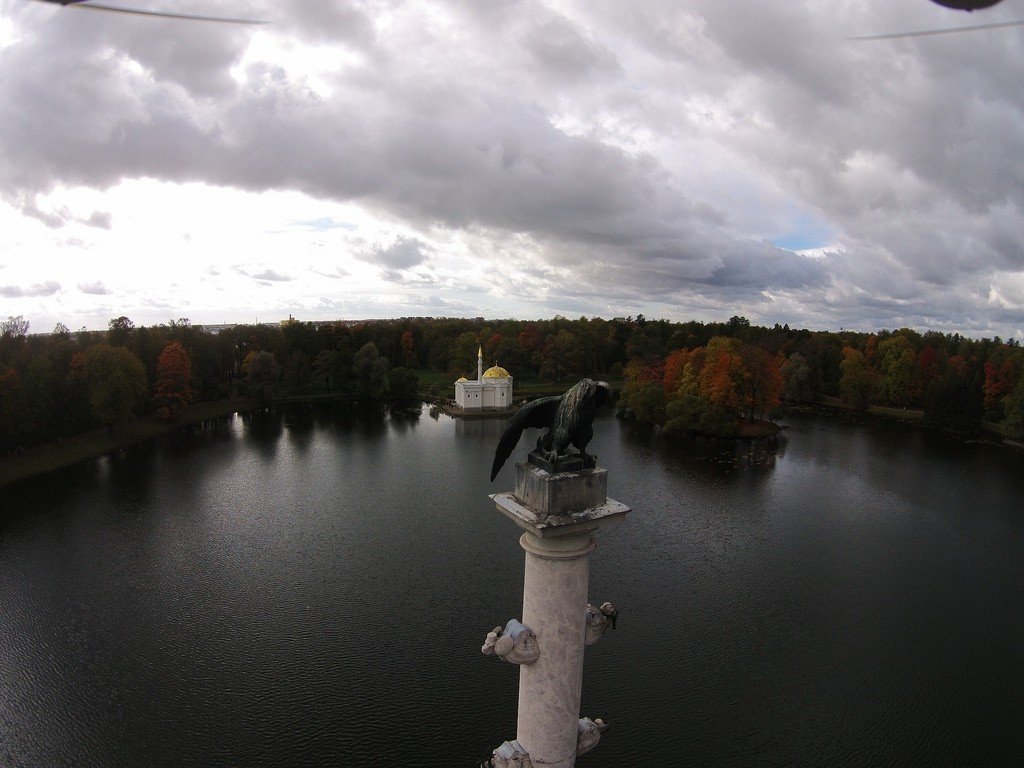
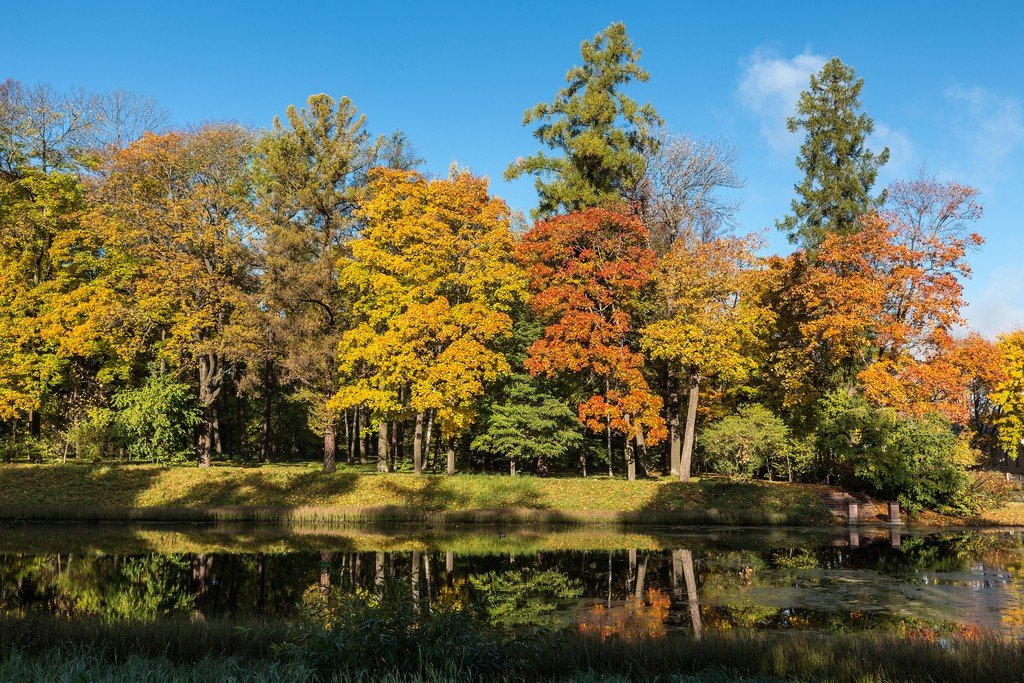
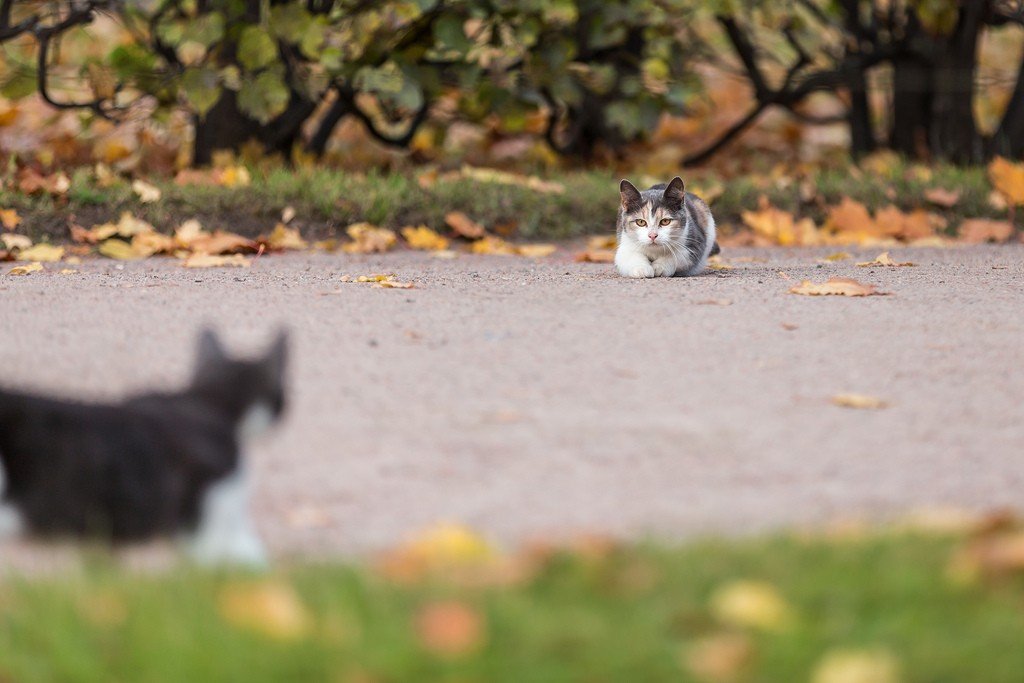
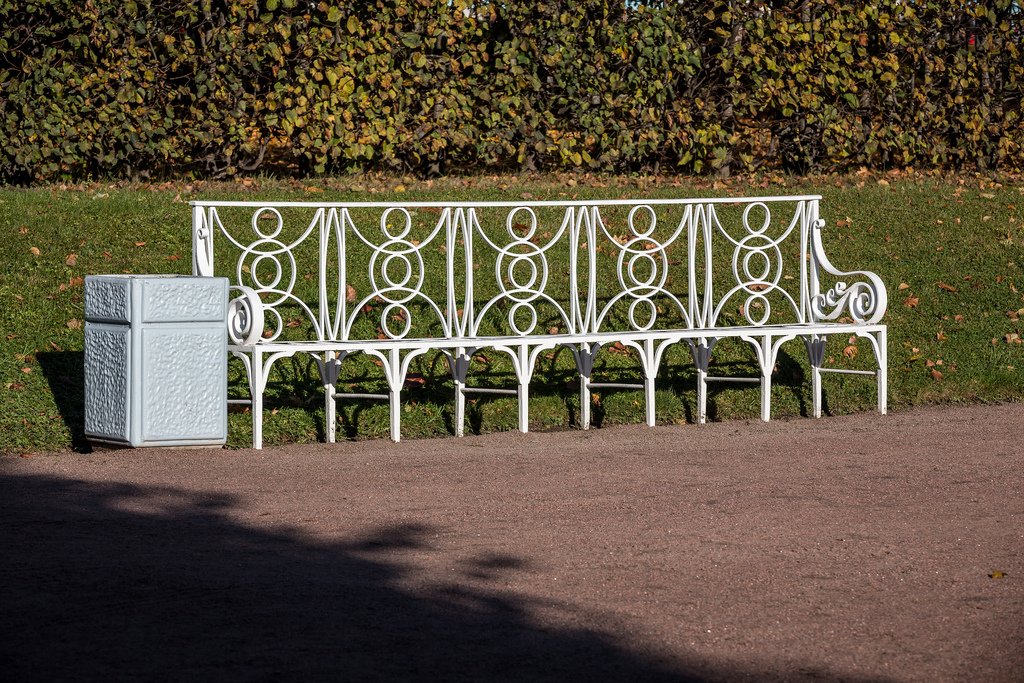
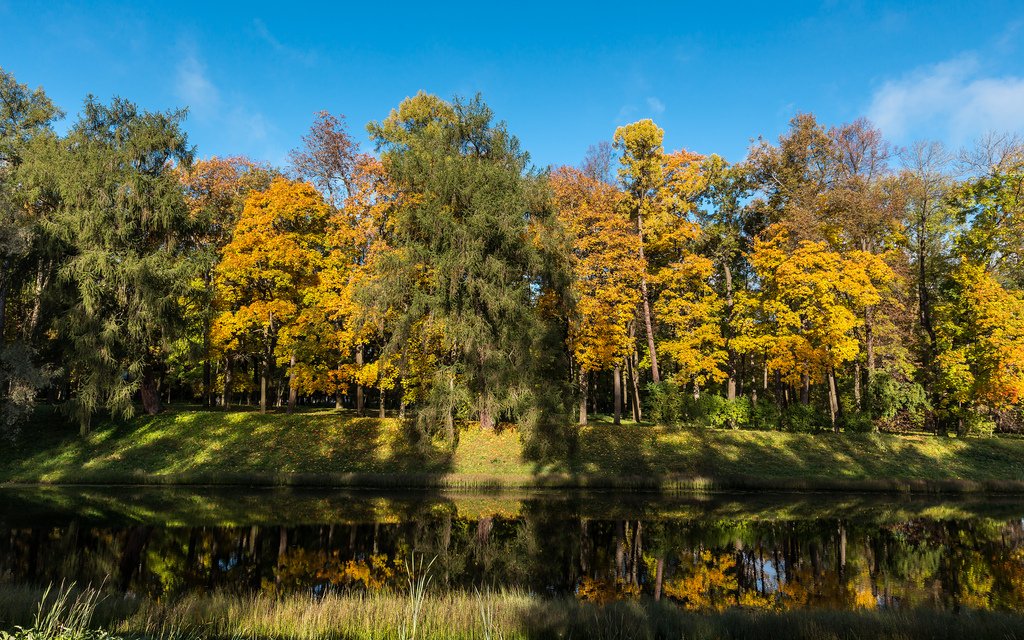
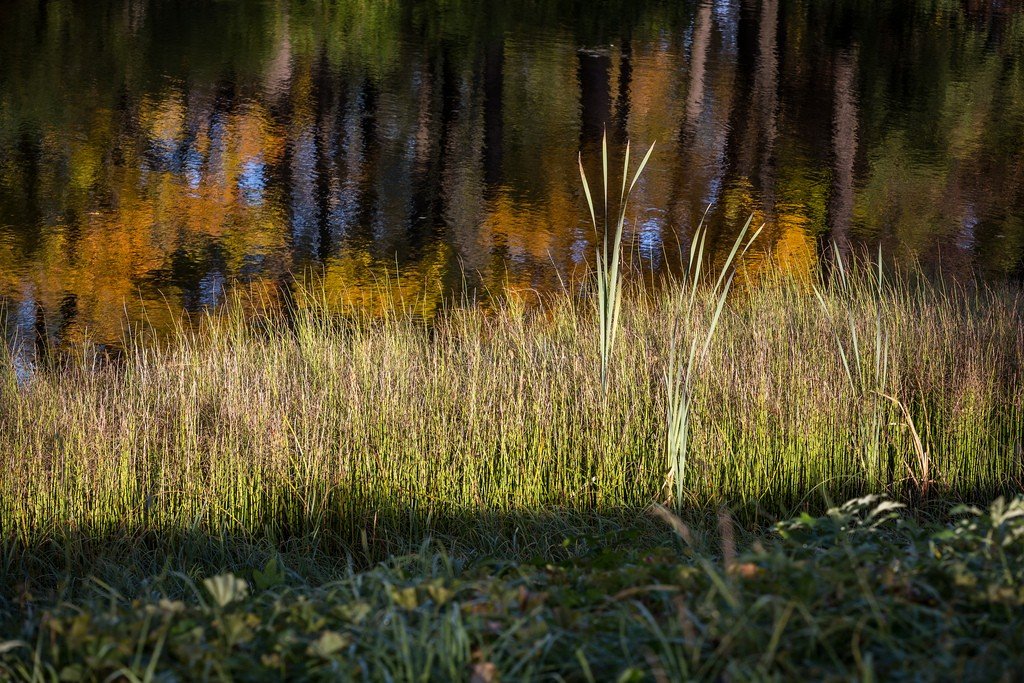
General information
The boundary of the regular and landscape parts of the park runs along the complex of Cameron’s Thermae buildings adjoining the side of the Catherine Palace (to the right of the exit). This artistic ensemble, visible from afar, consists of the Cameron Gallery, the Cold Bath Pavilion with the Agate Rooms, the Hanging and Color Garden, and the Ramp. Catherine II dreamed of having a real “Greco-Roman Rhapsody in my Tsarskoselsky Garden”. This project was carried out by Charles Cameron, invited to Russia from Scotland, about whom the Empress wrote: “I have now taken possession of Mr. Cameron, a Scotsman by birth, a great draughtsman, who is filled with the study of the ancients and is famous for his book “On Ancient Baths”. He and I are mastering a terraced garden here in Tsarskoe Selo, with baths below and a gallery above. It will be a beauty.”
The central place in the Thermae of Cameron, created on the model of ancient baths, is occupied by the Cold Bath – a two-story building, on the lower floor of which were bathing hall, warm bathroom and Russian steam room, and on the upper floor – six richly decorated rooms for recreation and entertainment, called Agate rooms. The Agate Rooms are decorated with agate, jasper, malachite, lapis lazuli, and other valuable stones.
On the hillside, a Scottish architect erected a gallery for walks and philosophical conversations. It bears his name, the Cameron Gallery. Its first floor, as well as the Cold Bath, the Ramp, and the Hanging Garden, is finished with Pudost stone. This stone, quarried in the vicinity of St. Petersburg, in the village of Pudost, resembles with its color and texture weathered stones of antiquity. A monumental staircase decorated with two colossal bronze statues of Hercules and Flora connects the lower floor with the colonnade. The colonnade served as a kind of belvedere: from here the Mother Empress liked to admire the magnificent view of the Great Pond and the landscape park.
.
On the second floor of the gallery there are bronze busts – copies of famous antiques.
.Catherine II herself chose the characters – great writers and philosophers of antiquity, mythological and historical heroes. There are Plato, Homer, Ovid, Cicero, Demosthenes, Caesar and even Lomonosov. Among the first to be installed was a bust of Seneca, an ancient Roman philosopher, to whom belongs the expression “Only a wise man can be a king”, which Catherine II liked to repeat. Interestingly, there used to be a bust of Brutus as a symbol of the sovereign’s democratic leanings, but after receiving news of the French king’s execution, she rejected the idea of universal brotherhood, uttering the words “Equality is a monster”, and Brutus was banished from the Cameron Gallery.
.The first floor of the gallery was used as living quarters for court ladies and maids of honor. They are now used for exhibitions. Currently there is a temporary exposition “Tsarskoye Selo – the Heritage of the Nation.”
In the regular garden there are two amusement pavilions erected in Elizabethan times by architect Rastrelli. One of them – the Hermitage (translated as “hermit’s retreat”), intended for rest and dinners in a narrow circle of the chosen ones, is located at the back of the Central Alley, where there used to be the so-called Wild Grove. It was surrounded by a canal with bridges designed to emphasize a sense of melancholic solitude. The sumptuous upper hall contained dining tables with elevating mechanisms, where dishes prepared by chefs were served from below. The pavilion has recently been reopened after a long restoration and you can see these unique mechanisms in action.
.
Another pavilion Grotto Rastrelli put on the bank of the Great Pond. He planned to decorate it inside with sea shells and porous tuff, but his plan was never realized. The new Empress Catherine II ordered to place in it antique sculptures, vases of colored stone, as well as a statue of Voltaire. She called this pavilion “Morning Hall”, as she liked to come here in the mornings. Now the pavilion is used for temporary exhibitions during the summer.
In addition, in the Old Park there is a romantic-looking Hermitage kitchen, where treats were prepared for dinners in a small circle, as well as the Upper Bath (“Soap Room of Their Highnesses”) and the Lower Bath (“Cavalier’s Soap Room”).
.To create the landscape part of Catherine Park, the architect Neelov, who worked for Catherine II, was sent to England to learn how to embody the principle of English gardens: “Art is beautiful when it seems nature, and nature is successful when art emphasizes it imperceptibly”. In the picturesque park landscapes were organically included exotic pavilions in the form of ancient ruins, “Gothic” and “Turkish” buildings, Chinese” pavilions, all sorts of bridges and columns, as well as a whole suite of monuments to the victories of Russian arms in the wars with Turkey.
.The 70-hectare landscape park begins just behind the Cameron Thermae. Its center is the Great Pond surrounded by green helmets. On this pond, members of the royal family and courtiers rode in gilded boats, watched gondola regattas, and staged pyrotechnic “sea battles”. Sailing on richly decorated and lantern-lit vessels was an integral part of festive evenings.
The Admiralty complex can be seen on the left – a red crenellated tower with two bird-houses on its sides. Boats were stored in the Admiralty, and an orchestra played in the large hall on the second floor while Catherine II rode on the lake. The bird houses held waterfowl, as well as pheasants and peacocks. Now the central building of the complex is used for temporary exhibitions, and in one of the bird houses there is a restaurant “Admiralty.”
.
On an island in the middle of the pond is a pavilion that was called the “Hall on the Island”. It was intended for concerts and recreation of boaters, and was occasionally used for court dinners. Access to the island can be gained via a restored historic ferry. Near the island rises out of the water Chesmenskaya Column – a monument in honor of naval victories of Russian arms in the Russian-Turkish War of Catherine the Great times.
.
In the park there are still many different ideas – Marble Bridge (colonnade on a granite base over a narrow channel), mosque-like Turkish Bath, cast-iron Gothic Gate, romantic Pyramid, lined with granite, at the foot of which Catherine II buried her favorite dogs, etc.
.A special place in the park is occupied by the Milk Fountain, which became known as the “Tsarskoselskaya Statue” or “Girl with a Jug”. This is the only sculpture specially executed for the Catherine Park. A granite rock serves as a pedestal for the bronze sculpture of the girl. From a broken jug, lying at her feet, runs a stream of key water. Pushkin praised this fountain in a poem:
.Having dropped the urn with water,the maiden broke it on the cliff,The maiden sits sadly,holding an idle shard.It’s a miracle! The water doesn’t run away,pouring from the broken urn;The maiden, over the eternal stream,sits eternally sad.
On the other side of the Catherine Palace (from the side of the parade ground) begins another park, no less picturesque – Alexander Park.
.Visitors
- Open daily from 9.00 to 21.00 .
- Entrance in summer (from 9.00 to 18.00) – 100 p., preferential – 50 p. . Foreigners – 200 p., students and schoolchildren – 100 p. .
- From 18.00 to 22.00 – entrance to the park is free .
- In winter the entrance is free
